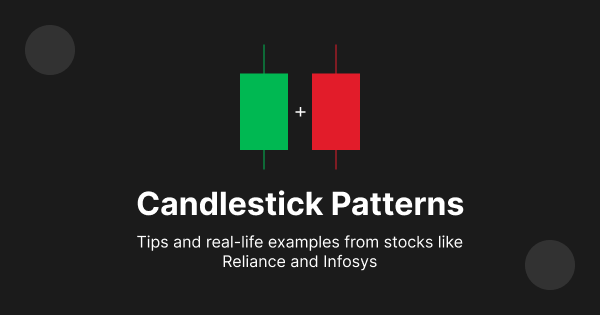When investing in stocks, one of the key considerations is the company’s size, often categorised into small-cap, mid-cap, and large-cap stocks. These terms refer to the company’s market capitalisation (market cap), which is calculated by multiplying the stock price by the number of outstanding shares. Each category offers different levels of risk, growth potential, and stability. Understanding the differences between small-cap, mid-cap, and large-cap stocks can help you make more informed investment decisions and build a well-balanced portfolio.
What is Market Capitalisation?
Before diving into the categories, it’s essential to understand market capitalisation. It represents the total value of a company’s shares in the stock market. Based on market capitalisation, companies are typically grouped into three main categories:
- Small-cap Companies with a market capitalisation of less than ₹5,000 crores and ranked beyond 250
- Mid-cap Companies with a market capitalisation between ₹5,000 crores and ₹20,000 crores and ranked between 101 and 250
- Large-cap Companies with a market capitalisation of ₹20,000 crores or more and ranked between 1 and 100
These classifications aren’t fixed and can vary depending on market conditions, but they provide a useful framework for assessing the risk and return profiles of companies.
Large-Cap Stocks: Stability and Long-Term Growth
Large-cap stocks refer to companies with a market capitalisation of more than ₹20,000 crores or more and ranked between 1 and 100.
These companies are often well-established, industry leaders with a long history of stable earnings and dividends. Examples include blue-chip companies like Apple, Microsoft, and Coca-Cola.
Key Characteristics of Large-Cap Stocks:
- Stability: Large-cap companies have a solid track record, which makes their stocks less volatile compared to smaller companies.
- Dividends: Many large-cap companies pay regular dividends, providing a steady income stream to investors.
- Lower Risk: Due to their size, these companies are generally more resilient during market downturns and economic recessions.
- Slow but Steady Growth: Large-cap stocks tend to grow more slowly than smaller companies but offer long-term stability.
Who Should Invest in Large-Cap Stocks?
Large-cap stocks are ideal for conservative investors looking for stability, consistent returns, and dividend income. These stocks are suitable for long-term investors who prioritise safety and are less focused on high growth.
Mid-Cap Stocks: A Balance of Growth and Stability
Mid-cap stocks refer to companies with a market capitalisation between between ₹5,000 crores and ₹20,000 crores and ranked between 101 and 250. These companies are usually in a growth phase but are more established than small-cap firms. Mid-cap stocks offer a balance between the high growth potential of small-caps and the stability of large-caps.
Key Characteristics of Mid-Cap Stocks:
- Growth Potential: Mid-cap companies have room to grow and expand, offering higher growth potential than large-cap companies.
- Moderate Risk: Mid-caps are generally less volatile than small-cap stocks but can still experience sharp price swings.
- Expansion: Many mid-cap companies are in the process of expanding their market presence, which can lead to significant price appreciation.
Who Should Invest in Mid-Cap Stocks?
Mid-cap stocks are suitable for investors looking for a blend of growth and stability. If you have a moderate risk tolerance and are seeking growth opportunities without the extreme volatility of small-caps, mid-cap stocks could be a good fit for your portfolio.
Small-Cap Stocks: High Growth and High Risk
Small-cap stocks refer to companies with a market capitalisation below less than ₹5,000 crores and ranked beyond 250.
These companies are typically in the early stages of their business lifecycle and have significant growth potential. However, they also come with higher risk due to their smaller size and market share.
Key Characteristics of Small-Cap Stocks:
- High Growth Potential: Small-cap companies often operate in niche or emerging industries and can grow rapidly, offering the potential for substantial returns.
- Volatility: Small-cap stocks are more volatile than mid-cap and large-cap stocks. Their stock prices can fluctuate significantly based on market conditions and company performance.
- Higher Risk: Smaller companies are more vulnerable to economic downturns, competition, and operational challenges.
- Less Analyst Coverage: Small-cap stocks often receive less attention from analysts, which can create opportunities for investors to find undervalued companies.
Who Should Invest in Small-Cap Stocks?
Small-cap stocks are ideal for risk-tolerant investors with a long-term horizon who are willing to accept short-term volatility for the potential of high returns. These stocks are suitable for investors who want to diversify their portfolio with high-growth opportunities.
Comparing Small-Cap, Mid-Cap, and Large-Cap Stocks
| Category | Market Capitalization | Growth Potential | Risk Level | Ideal For |
| Large-Cap | Above ₹20,000 crores and ranked between 1 and 100 | Slow but steady growth | Low | Conservative investors seeking stability and dividends |
| Mid-Cap | Between ₹5,000 crores and ₹20,000 crores and ranked between 101 and 250 | Moderate growth | Moderate | Investors looking for a balance of growth and stability |
| Small-Cap | less than ₹5,000 crores and ranked between 1 and 100 | High growth potential | High | Risk-tolerant investors seeking high-growth opportunities |
Benefits of Diversifying Across Market Caps
Instead of choosing just one category, many investors opt to diversify their portfolio across small-cap, mid-cap, and large-cap stocks. This approach helps balance risk and return while providing exposure to companies in different stages of growth.
- Large-caps offer stability and dividend income, acting as an anchor for your portfolio.
- Mid-caps provide a balance of growth and stability, with the potential for both appreciation and safety.
- Small-caps offer high-growth opportunities, helping to boost overall portfolio performance, especially during strong economic periods.
By holding a mix of stocks across different market capitalizations, you can benefit from the long-term growth of small-cap and mid-cap stocks while reducing risk with the stability of large-cap stocks.
Conclusion: Which Market Cap is Right for You?
Choosing between small-cap, mid-cap, and large-cap stocks depends on your investment goals, risk tolerance, and time horizon. Large-cap stocks are better for conservative investors who prioritise stability and steady returns. Mid-cap stocks suit investors looking for moderate risk and balanced growth. Small-cap stocks are ideal for those willing to take on more risk in exchange for potentially higher returns.
To build a well-rounded portfolio, consider diversifying your investments across all three categories. This allows you to tap into different growth stages of companies while managing risk effectively.
By understanding the characteristics of small-cap, mid-cap, and large-cap stocks, you can make more informed investment decisions and craft a portfolio that suits your financial objectives.




